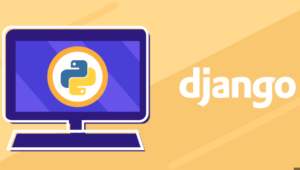GUI (Graphical User Interface) programming is essential for creating user-friendly desktop applications. Python provides several libraries for GUI development, including Tkinter and PyQt. Let’s explore these libraries:
- Tkinter:
Tkinter is the standard GUI toolkit for Python and comes bundled with the Python standard library. It provides a simple and easy-to-use interface for creating GUI applications. Key features of Tkinter include:
- Widgets: Tkinter offers a wide range of built-in widgets such as buttons, labels, entry fields, checkboxes, radio buttons, listboxes, and more. These widgets can be organized using layout managers like grid, pack, or place.
- Event Handling: Tkinter allows you to bind functions to various events, such as button clicks, mouse movements, or keyboard inputs. This enables you to respond to user interactions and trigger actions accordingly.
- Dialogs and Message Boxes: Tkinter provides pre-built dialog boxes and message boxes for displaying information, getting user input, or prompting for confirmation.
- Customization: Tkinter allows you to customize the appearance of widgets by specifying attributes such as size, color, font, and style. You can also create your own custom widgets by subclassing existing Tkinter classes.
- PyQt:
PyQt is a powerful and versatile GUI toolkit for Python that provides bindings for the Qt framework. Qt is a popular C++ framework known for its extensive set of widgets and powerful features. PyQt offers a rich set of functionalities for creating professional-looking GUI applications. Key features of PyQt include:
- Widgets and Layouts: PyQt provides a wide range of Qt widgets, including buttons, labels, text fields, checkboxes, and more. It also offers flexible layout managers for arranging widgets in a window, such as QVBoxLayout, QHBoxLayout, and QGridLayout.
- Signals and Slots: PyQt uses a signal and slot mechanism for event handling. Signals are emitted when certain events occur, and slots are functions or methods that respond to those signals. This allows for efficient event-driven programming.
- Customization: PyQt provides extensive customization options, allowing you to modify the appearance and behavior of widgets using stylesheets, properties, and Qt’s powerful styling mechanisms.
- Database Support: PyQt integrates well with Qt’s database module (QtSql), enabling you to easily connect to databases, execute queries, and display data in GUI applications.
- Multimedia and Graphics: PyQt includes modules for handling multimedia content and advanced graphics, such as playing audio and video files, rendering 2D and 3D graphics, and manipulating images.
Both Tkinter and PyQt have comprehensive documentation, tutorials, and examples available to help you get started with GUI programming in Python. Tkinter is a good choice for simpler applications or when you want to minimize external dependencies. On the other hand, PyQt offers more advanced features and a polished look for professional applications. Choose the library that best suits your needs and preferences to create interactive and visually appealing GUI applications in Python.



